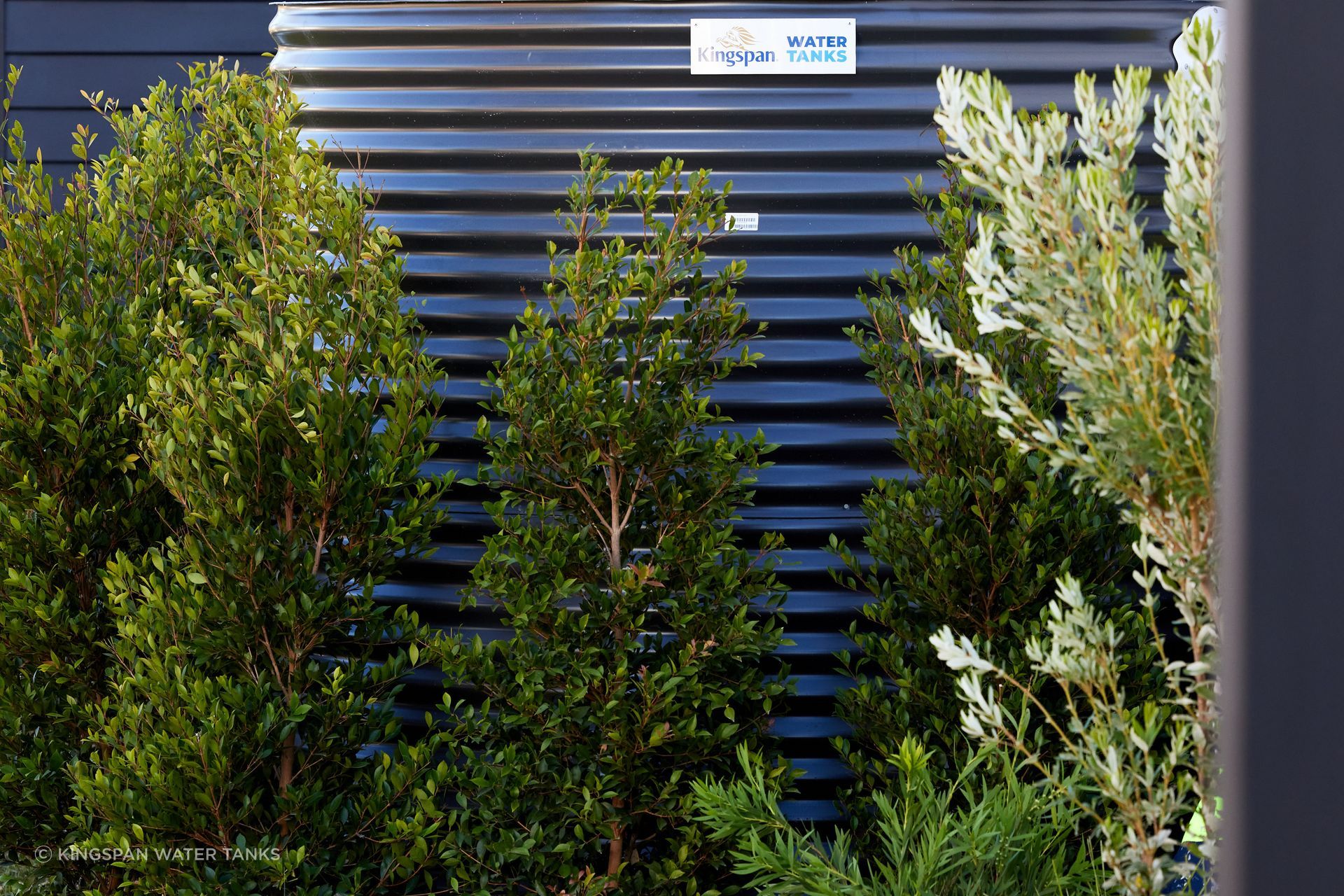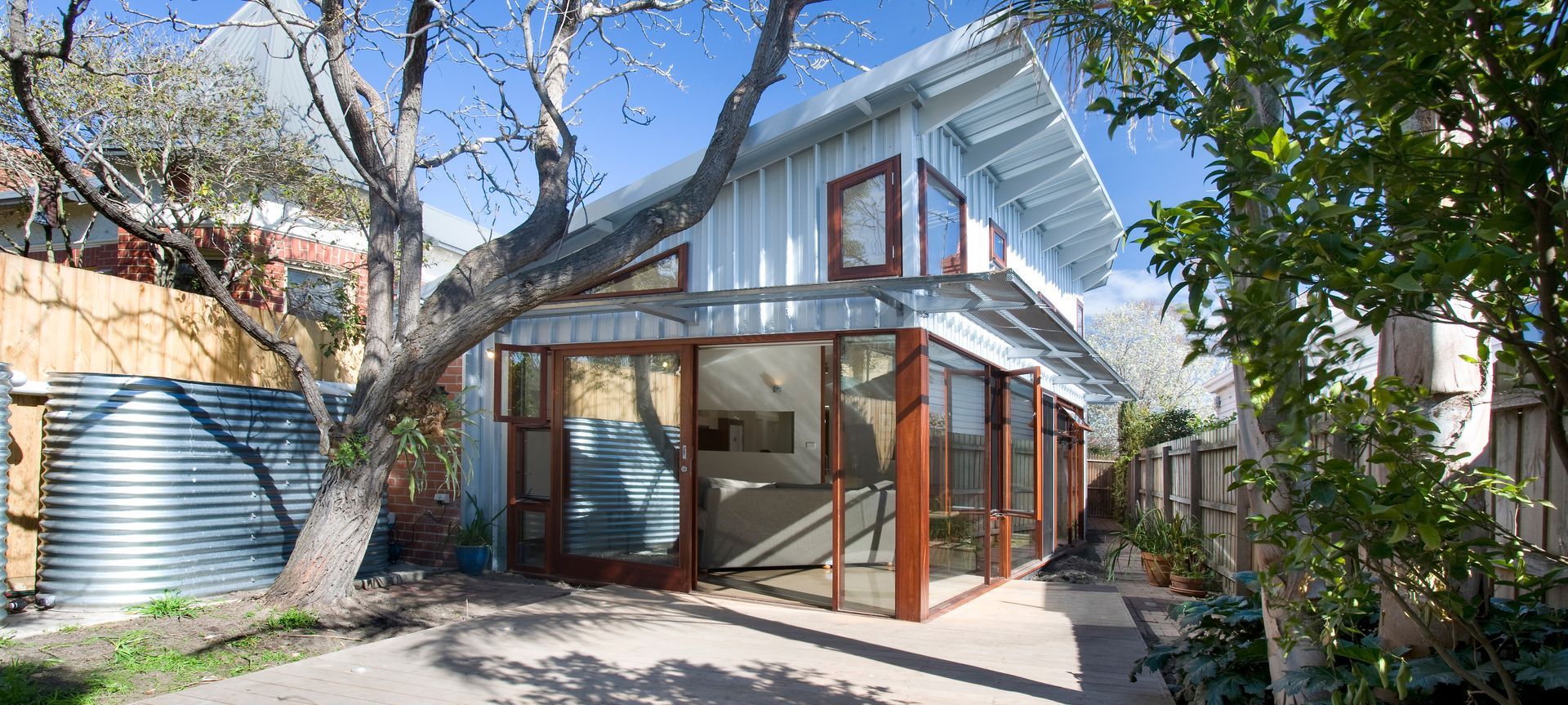The Australian continent is one of the driest places on Earth, with an annual rainfall of only 419mm per year. In this context, the challenge of sustainable water management isn’t something that’s particularly new, which is why an increasing number of us are considering rainwater harvesting.
With advice from Kingspan Water Tanks, we look closely at the most important things to consider before buying a rainwater tank as an integral part of your water management plan.
Understanding your water needs: the capacity factor
Choosing the right capacity water tank is perhaps the most crucial factor when making a decision, and there’s more to it than you might think. As Kingspan Water Tanks explains, some people begin with misconceptions that need to be quickly dispelled.
“Some people think bigger is always better, but in reality, while having a large tank can provide security, the size also needs to align with rainfall availability, roof catchment area and water usage. We help homeowners calculate their ideal size based on their expected demand vs. the available rainwater supply.”
On the flipside of this, Kingspan Water Tanks also says a lot of people underestimate how much water they’ll use and will need from a rainwater tank.
“Many assume a small tank will cover all their needs, but factors like extended dry spells, garden irrigation, and multiple household uses can drain it fast. We break down water consumption (e.g. 1 flush = ~5L, 1 minute of garden watering = ~15L), to show how quickly small tanks can run out.”
Taking time to understand the full potential of what your tank can be used for is also key to getting the most out of it in the long run.
“Many forget they can also use rainwater for laundry, toilets, gardens, and even fire protection. We explain the cost savings of using rainwater for non-drinking purposes, reducing reliance on mains water. We also have an innovative online 3D tank builder, which can help you through this process.”
The catchment area of your roof is an important determining factor when it comes to capacity, something many people are oblivious to, as they believe that rainfall alone will keep the tank full.
“Rainfall patterns vary, and a tank is only as effective as the roof size that collects the water. We help homeowners calculate their catchment area using a formula (1mm of rain on 1m² of roof = 1L of water). This helps ensure they size their tank appropriately.”
Summary recommendations to determine water tank capacity:
- Assess household water usage: Including, washing, garden, toilet, etc.
- Evaluate roof catchment area: Determine how much rainwater can be harvested.
- Factor in local rainfall patterns: Estimate storage needs accounting for dry periods.
- Discuss additional considerations: Council regulations, available space, and future needs.

Exploring the different types of water tanks
Once you have determined the size, the next part in the process is often learning about the different types of water tanks that are available. Broadly speaking, these fall into four different categories, each with its own traits and qualities.
1. Steel Above Ground Tanks
Steel Above Ground Tanks are a popular choice in Australia thanks to their natural durability and longevity. They are highly versatile, with solutions like Kingspan’s Made to Measure Tanks with customisable dimensions in capacities ranging from 500L - 28,960L, as well as large capacity Rural Tanks that can reach up to 365,000L in capacity.
As Kingspan Water Tanks explains, they are a great all-around option.
“Steel Above Ground Tanks are ideal when there’s sufficient space on the property for installation, making them perfect for households, gardens, or rural properties where large volumes of water are needed. They are suitable for most climates and are durable against heavy rains and winds. They are also cost-effective for those with budget considerations.”
Reasons to choose a Steel Above Ground Tank:
- Extremely durable: Australian-made using quality Bluescope AQUAPLATE® steel.
- Long lifespan: 10-year construction warranty and 20-year warranty against corrosion.
- Highly customisable: Tailored dimensions and four different tank shapes.
- Rural options: Rural Steel Water Tanks available with capacities ranging from 26,000L - 365,000L.
2. Aquacomb
The Aquacomb system is an innovative modular water storage solution that consists of a series of individual pods (240L or 320L), which integrate into the slab of new buildings. It is designed to manage rainwater for a broad spectrum of settings, including residential, commercial and industrial. It is also a great space saver, storing water below ground level, making it ideal for projects with limited outdoor space.
“The innovative Aquacomb system is fantastic for new residential developments or major renovations where integrating a tank under the foundation is possible and ideal. It’s often considered for crowded urban areas. “
Reasons to choose an Aquacomb system:
- Great for new builds with limited space: Easily integrates into new build projects without needing to reengineer slabs.
- Highly scalable system: Interconnecting pipes makes the system both modular and
- scalable.
3. Poly Above Ground Tanks
Poly Above Ground Tanks, or Poly Tanks, are constructed using high-quality polyethylene, manufactured in one seamless piece, eliminating the risk of tears or splits. Available in Slimline, Round and Underdeck designs with a capacity range of 1,000L - 10,000L, they are perfect for modern urban dwellings.
“Poly water tanks are a smart choice for residential builds. They’re cost-effective, low-maintenance, and available in a range of modern colours and shapes to complement the home’s design. They offer the durability you need without compromising on visual appeal or budget.”
Reasons to choose a Poly Above Ground Tank:
- Compact and strong: Ideal for city homes and narrow blocks with a 10-year replacement warranty.
- Minimal aesthetics: Fits discreetly along walls, fencelines and under decks.
- Great garden solution: Popular choice for garden use and small-scale irrigation.
4. Underground Water Tanks
As the name suggests, Underground Water Tanks are installed below ground level and are designed to be space-efficient and discreet, with a focus on conserving valuable above-ground space.
Kingspan Water Tanks states that these are particularly advantageous in a variety of applications.
“Underground Water Tanks are great for urban or suburban areas where outdoor space is minimal. This includes properties where above-ground tanks would disrupt the look of the landscape. They are also recommended for areas with heavy rainfall or flooding since they can be placed below the water table to prevent overflows. They can be more expensive to install due to the excavation, but are excellent in space-constrained areas.”
Reasons to choose an Underground Water Tank:
- Excellent for limited spaces: Typically urban or suburban areas.
- Great for preserving aesthetics: As underground solutions, they aren’t seen.
- Good for high rainfall areas: Placement prevents overflows.
Selecting colours: a variety of Colorbond® options
Finally, with the exception of the Aquacomb and Underground Water Tanks, selecting the right colour is a crucial part of the decision-making process. In this regard, water tanks have come a long way and are no longer seen as purely functional additions to a home or property, as Kingspan Water Tanks explains.
“Aesthetics are becoming increasingly important for homeowners when selecting water tanks. Many people now view their water tanks not just as functional objects but also as part of their property’s overall design and landscaping. We understand this and offer a variety of customisable options to ensure that your water tank complements your home’s style and the surrounding environment.”
Indeed, the range of colour options is vast. For Steel Above Ground Water Tanks, there is a base range and a painted range of Colorbond® steel colours with options that are natural or vibrant, neutral or bold.
Poly Above Ground Tanks have an equally diverse range of options, with over 25 different colours that have been matched to equivalent Colorbond® choices to make selection a little easier.
Kingspan Water Tanks says the extensive range of tasteful and complementary colours means there is something for everyone.
“Kingspan Water Tanks come in a wide range of Colorbond® steel colours, allowing homeowners to select a tank that seamlessly blends with their home's exterior or contrasts for a bold look. Whether your property features neutral tones, earth hues, or vibrant colours, we can match the tank’s finish to complement your house, garden, and landscape. Popular colours include Monument, Surfmist and Shale Grey, which are well-suited to urban and contemporary homes.”
